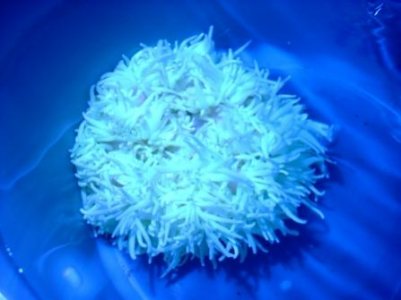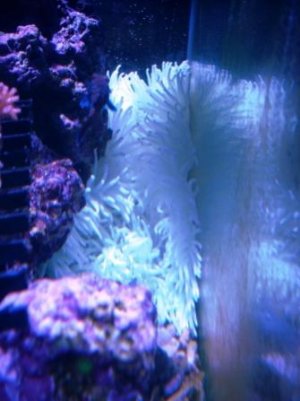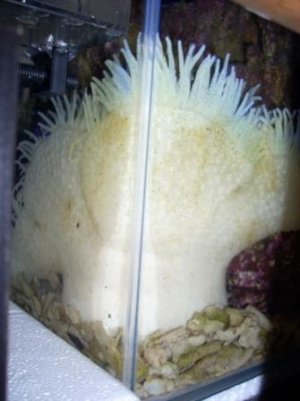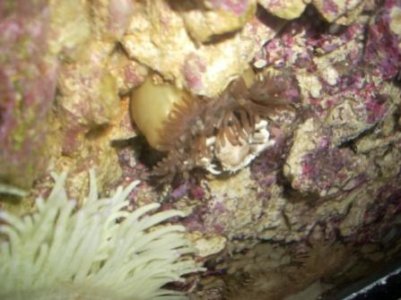ThRoewer
New member
I found this H. crispa last Saturday at a local store. I was looking for one for a wile but all I could get so far was a very small slightly brown one that was damaged and is still in recovery with uncertain outcome.
I had a white crispa back in 1985 that turned brown again (I suspect zooxanthellae transfer from a neighboring Anthelia colony) and this one was big and otherwise healthy looking so I gave it a try.
Light source: Kessil A360W with spectral controller and max color mix set to 60%
Water: filtered and enhanced natural seawater
Water change: at least 25% every week
I add B-Ionic 2 component calcium buffer system (currently 10 ml of each part) and some Kalkwasser. The pH is in the morning at 8.15 and at the middle of the light period at about 8.35
All the hard corals I have, including Acropora are growing rather fast.
Out of the bag it looked a bit shriveled:

Because of the flow pattern and not to burn it in the center of the light, and in hope of a possible zooxanthellae transfer I placed it in the corner that my green BTA hat chosen (though that one was not at all pleased with its new neighbor)
Tuesday it was still in the corner I placed it. It seems it likes it there so far:

View from the outside of the corner on the underside and foot.


I feed a mix of live food (brine shrimp, tigger pods, daphnia) and frozen food (Spirulina brine shrimp) and the anemone(s) get for sure their share of it. I also target feed it some Mysis that it seems to take.
What can be done to increase the chances that it gets its zooxanthellae back or to speed up the process?
I had a white crispa back in 1985 that turned brown again (I suspect zooxanthellae transfer from a neighboring Anthelia colony) and this one was big and otherwise healthy looking so I gave it a try.
Light source: Kessil A360W with spectral controller and max color mix set to 60%
Water: filtered and enhanced natural seawater
Water change: at least 25% every week
I add B-Ionic 2 component calcium buffer system (currently 10 ml of each part) and some Kalkwasser. The pH is in the morning at 8.15 and at the middle of the light period at about 8.35
All the hard corals I have, including Acropora are growing rather fast.
Out of the bag it looked a bit shriveled:
Because of the flow pattern and not to burn it in the center of the light, and in hope of a possible zooxanthellae transfer I placed it in the corner that my green BTA hat chosen (though that one was not at all pleased with its new neighbor)
Tuesday it was still in the corner I placed it. It seems it likes it there so far:
View from the outside of the corner on the underside and foot.
I feed a mix of live food (brine shrimp, tigger pods, daphnia) and frozen food (Spirulina brine shrimp) and the anemone(s) get for sure their share of it. I also target feed it some Mysis that it seems to take.
What can be done to increase the chances that it gets its zooxanthellae back or to speed up the process?




